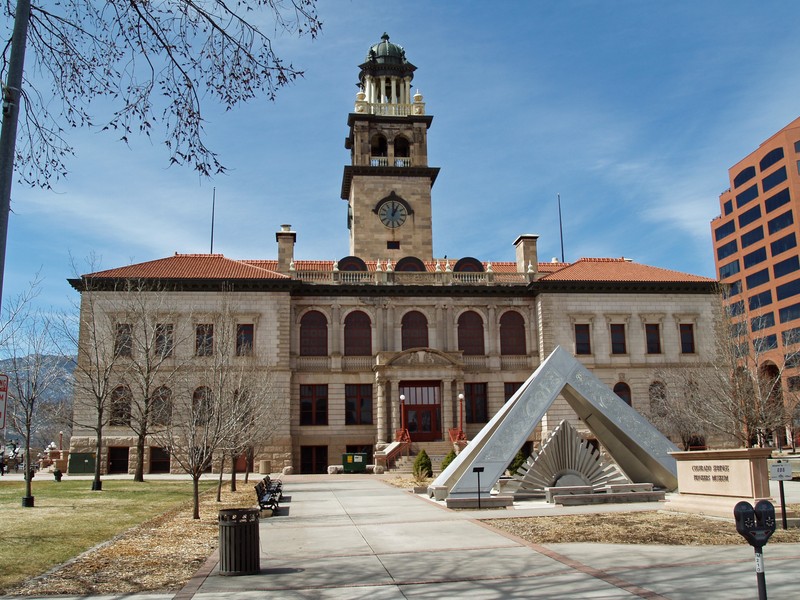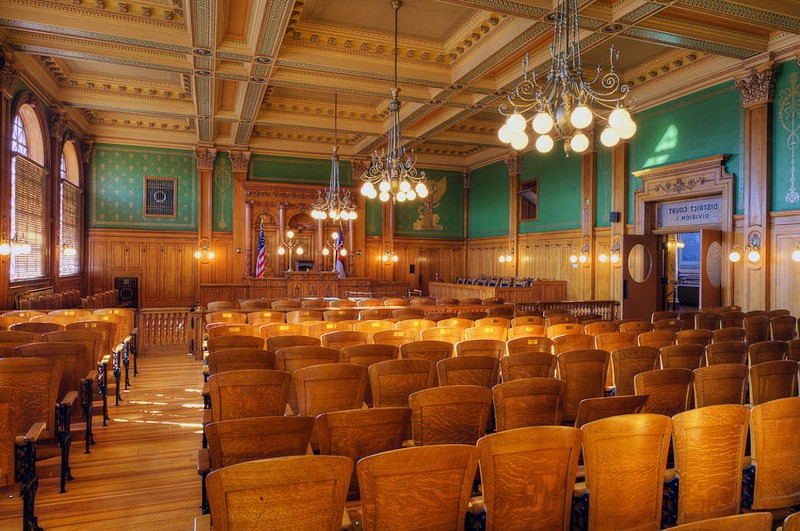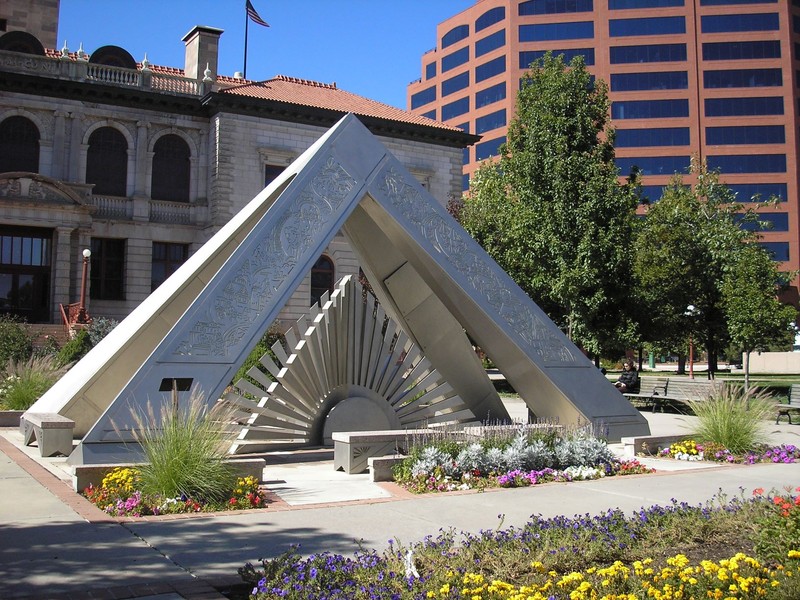Colorado Springs Pioneers Museum
Introduction
Text-to-speech Audio
Images
The Colorado Springs Pioneer Museum is located in the historic 1903 courthouse building, which is listed on the National Register of Historic Places.

The old courtroom

Follow the Setting Sun

Backstory and Context
Text-to-speech Audio
Housed in the former county courthouse building, the Colorado Springs Pioneers Museum chronicles the cultural, economic and political history of the Pikes Peak region. It has received many awards and is accredited by the American Alliance of Museums. It holds a collection of 60,000 objects, comprising of fine art, artifacts, and archival materials, which are housed in the Starsmore Center for Local History. The museum features two permanent exhibits, the Helen Hunt Jackson House, and One Man and His Vision: General William Jackson Palmer. Helen Jackson (1830-1850) was an important literary figure in the 19th century who moved to Colorado Springs in 1873. William Palmer fought in the Civil War as a Union general who later founded the city. Other exhibits are changing, and they explore topics such as the mining industry, agricultural life, Native American cultures, fine art (the museum contains an excellent collection of Van Briggle Art Pottery, which is often featured in exhibits), military history, and even space exploration. Visitors can also see murals painted by Eric Bransby that depict the history of the Pikes Peak area. Statues depicting local history stand outside the museum.
The building was constructed in 1903 in the Second Renaissance Revival style. It served as a courthouse until 1973 and was added to the National Register of Historic Places in 1972, which helped it from being demolished. The museum opened in 1979.
Several statues depicting local history stand on the museum grounds. Particularly noticeable is Follow the Setting Sun by Harriet Lee. In 1997, local civic groups persuaded the El Paso County Pioneers Association to abandon their plans to commission "a rather traditional piece, featuring a family portrayed next to a prairie schooner" cast from concrete.1 Local residents compromised on a local artist's design featuring a sixteen-foot-tall stainless steel pyramid imprinted with a series of images telling the history of the Pike's Peak region. Artist Harriet Lee explained,
"I wanted to capture the pioneer spirit, but I wanted a more contemporary piece as opposed to a Conestoga wagon."2
Engravings on the pyramid include images of indigenous peoples, the Air Force Academy, and cell phones, but the primary focus is on white frontier stories, in keeping with the Pioneers Museum's focus.
Sources
1 City of Colorado Springs. "New sculpture installed at Colorado Springs Pioneers Musem [sic]." Accessed July 5, 2013. http://permits.springsgov.com/Page.asp?NavID=2684
2 Huspeni, Dennis. "Past, future meet in new sculpture pyramid going up this week at Pioneers Museum." Colorado Springs Gazette April 18, 2005.
"About Us." Colorado Springs Pioneer Museum. Accessed November 26, 2016. http://www.cspm.org/about-us.
Garris, Patricia. "El Paso County Courthouse." National Park Service - National Register of Historic Places. September 29, 1972. http://focus.nps.gov/GetAsset?assetID=d5a5ed18-93b9-4274-8fb9-bed1609af3ee.
Prescott, Cynthia Culver. Pioneer Mother Monuments: Constructing Cultural Memory. University of Oklahoma Press, 2019.
Pioneer Monuments in the American West
